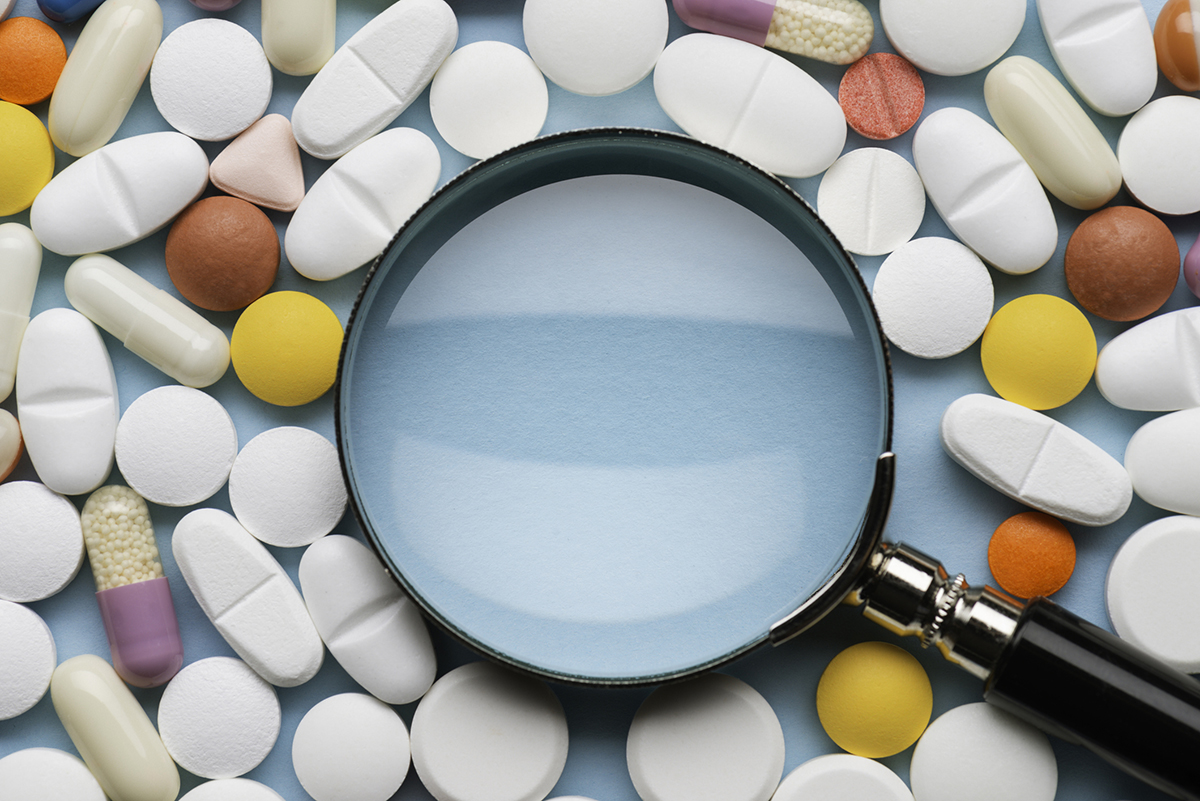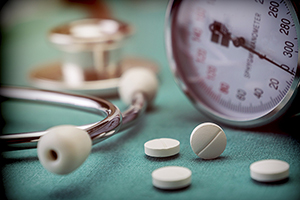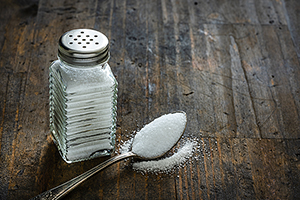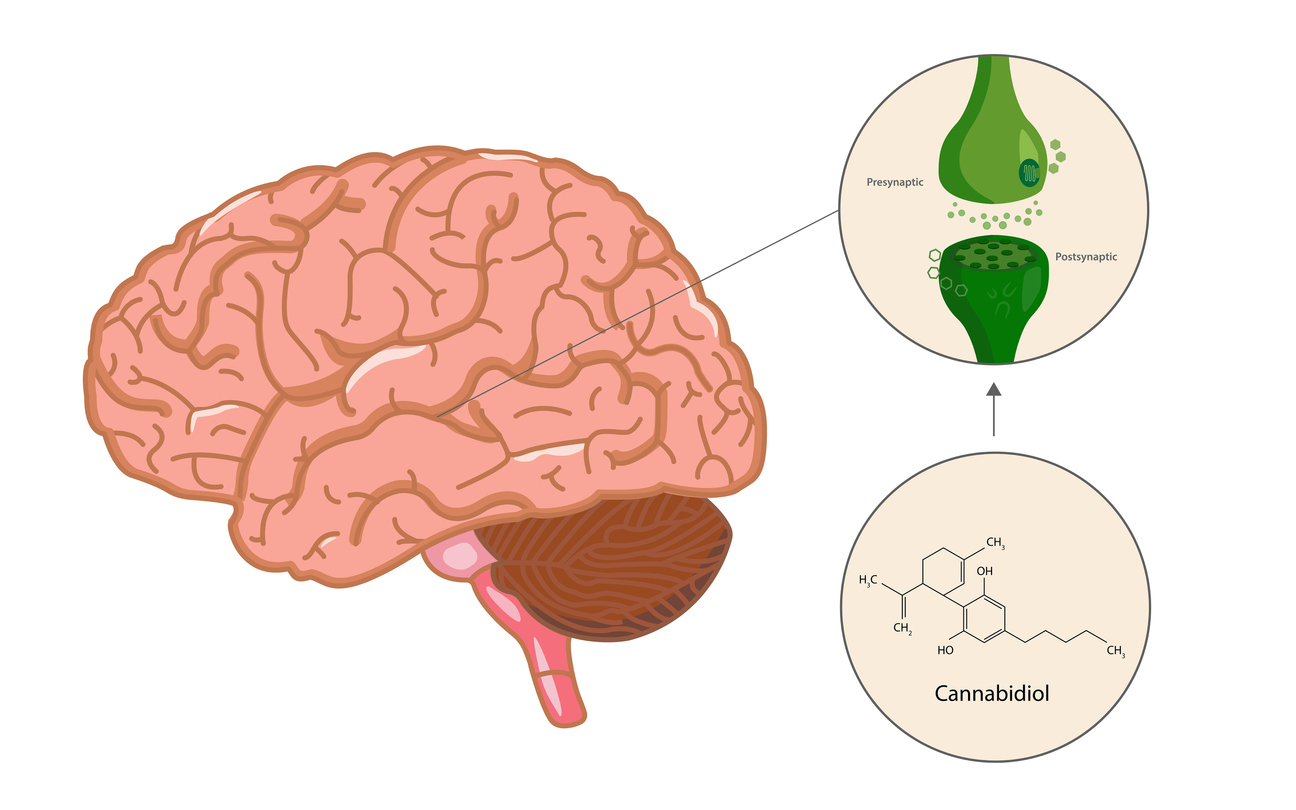Introduction: Blood pressure regulation and hypertension
The body’s ability to maintain its blood pressure is vital to life. Chronic hypertension is a major coronary heart disease risk factor. Hypertension contributes to half a million strokes and more than a million heart attacks each year. The higher the blood pressure above the normal 120/80 mmHg, the greater the risk of heart disease. This condition is sometimes referred to as the silent killer, since people usually cannot feel the physical effects of high blood pressure.
There are two types of hypertension. Hypertension without an identifiable cause is categorized as essential or primary hypertension. When hypertension has a specific cause, such as in cases of kidney disease, it is considered secondary hypertension.
What is blood pressure? The pumping action of the heart must create enough force to push blood through the major arteries, into the smaller arteries, and finally into the tiny capillaries, where the porous walls permit fluid exchange between the blood and tissues.
Several common factors influence blood pressure. The nervous system helps maintain blood pressure by adjusting the size of the blood vessels and by influencing the heart’s pumping action. The kidneys assist in regulating blood pressure by adjusting mechanisms that change blood volume. For example, when blood flow to the kidneys is reduced, as would be the case in atherosclerosis, the kidneys set in motion actions that raise blood pressure by expanding blood volume and constricting surrounding blood vessels. Obesity is a contributing factor because excess body fat, especially central fat, can precipitate hypertension. Another reason could stem from the extra miles of capillaries through which blood must be pumped. Insulin resistance, which is associated with obesity, triggers the pancreas to produce more insulin to move glucose into cells. High blood insulin may signal the kidneys to retain sodium and may precipitate the development of hypertension. This may explain why hypertension is two to three times more likely to occur in people with non-insulin-dependent diabetes mellitus (NIDDM), which is characterized by insulin resistance, than the rest of the population.
The treatment of hypertension often focuses on weight loss, dietary changes, exercise and drug therapy. Aside from drug therapy, changes can be implemented by the individual as part of a therapeutic protocol.
For individuals with insulin resistance, consuming a consistent amount of carbohydrate, based on individual tolerance, as part of balanced meals, at regular times, is a good place to start. All simple sugars, refined foods and processed carbohydrates must be avoided. The details of such a plan can be explained and designed by a certified nutritionist.
Now we will explore some possible alternatives to treat this condition.
Prior to addressing what can reduce blood pressure, we should briefly address often overlooked contributing factors to hypertension.
Other than a poor diet, obesity, certain diseases, sedentary lifestyle and a genetic predisposition, there are several contributing factors to hypertension. Lifestyle factors, environmental factors and stress management all can play a role in hypertension. Adjusting and addressing each of these factors can play a strong part in the non-pharmacological treatment of hypertension.
Lifestyle factors including smoking, alcohol and coffee consumption have been shown to increase blood pressure. Chronic alcohol consumption is a predictor of hypertension (1), and nicotine has been found to increase blood pressure (2). A study conducted in Paris, France, revealed higher systolic and diastolic blood pressure levels in coffee drinkers, compared to non-coffee drinkers, with levels rising in correlation to the amount of coffee consumed each day (3).
Environmental factors such as lead contaminated drinking water and cadmium toxicity have been shown to promote hypertension (4). Sources of lead exposure include lead paint, shooting ranges and water contamination via municipal water supplies or household lead pipes. Sources of cadmium include industrial commercial paints and cigarettes. The best safeguard against lead and cadmium toxicity is to remain acutely aware of their sources and avoid them when possible. In the event of lead or cadmium toxicity, a medical doctor knowledgeable in the art of heavy-metal poisoning can design a protocol to remove such metals.
How an individual handles stress can affect blood pressure. The groundwork for the modern meaning of stress was laid by Walter B. Cannon, a physiologist at Harvard University around the turn of the century. He described the fight-or-flight response as a series of biochemical changes that prepare one to deal with threats of danger. Hans Selye, one of the first major researchers on stress, described what happens in the body during the fight-or-flight response. He found that any problem, imagined or real, can initiate the fight-or-flight response, which results in an increase in heart rate, breathing rate, muscle tension and blood pressure. Stress reduction techniques from various disciplines of mind/body medicine such as biofeedback, meditation, yoga and relaxation exercises all have shown success in reducing blood pressure (5).
Exercise, diet, supplements and certain herbs can produce a hypotensive effect.
Reduction in body fat is one of the most effective and long-lasting treatments for hypertension. In fact, individuals on medication for hypertension may be able to have their doctor reduce the dose or, in some cases, discontinue the drugs if they lose weight. Weight control reduces the risk of hypertension, and even a modest reduction in body weight may significantly lower blood pressure. Not only does physical activity help with weight control, but moderate exercise, specifically aerobics, helps lower blood pressure directly. Back in 1990, a study in the Journal of the American Medical Association stated that those who engage in regular aerobic activity might not need medication for mild hypertension (263; 2766-2771).
Diet can be a powerful strategy to combat hypertension. An ideal diet would be one that is designed specifically for a patient. However, in general an anti-hypertension diet should include all essential nutrients; be rich in fiber; high in potassium, calcium and magnesium from vegetables, fruits, legumes, whole grains, low-fat dairy or dairy substitutes fortified to match the nutritional profile of dairy; low in sodium and saturated fat, with total fat from monounsaturated and polyunsaturated sources totaling 30 percent of calories; and conducive to weight loss. Such a diet supports the 1997 recommendations of the Joint National Committee on Prevention, Detection, Evaluation, and Treatment of High Blood Pressure. This diet, which was rigorously evaluated in the Dietary Approaches to Stop Hypertension (DASH) clinical trial, substantially lowered blood pressure in normotensive and hypertensive individuals (6). As noted in this diet, sodium is reduced. The association of a high sodium diet and high blood pressure has been established. However, there may be an even stronger incentive to reduce dietary sodium levels. In the Dec. 1, 1999 issue of the Journal of the American Medical Association, researchers studied the relationship between dietary sodium and cardiovascular disease risk in overweight and non-overweight individuals. They concluded that high sodium intake is strongly and independently associated with an increased risk of cardiovascular disease and all cause mortality in overweight individuals (282: 2027-2034). However, remember that we are all biochemically unique, and one person’s food may actually be another person’s poison. It is important to consult a certified nutritionist to design an individualized diet.
The supplement coenzyme Q10 has been utilized to treat hypertension. Almost ten years ago, the department of medicine, Mt. Sinai Hospital and Medical Center in New York, reported in the Journal of Clinical Pharmacology that its cardiovascular importance is now being realized in clinical trials worldwide (7). In humans, a deficiency of coenzyme Q10 was found in 39 percent of patients with hypertension, compared to 6 percent of those with normal blood pressure. Providing these patients with 60 mg of coenzyme Q10 for eight weeks resulted in a 10 percent or greater decrease in blood pressure (8).
In a double-blind study, 20 hypertensive subjects with low serum coenzyme Q10 levels receiving 100 mg of coenzyme Q10 per day for 12 weeks showed a significant reduction in systolic and diastolic blood pressure (9).
In a 1994 study, 109 patients with known hypertension were given 225 mg of coenzyme Q10 daily, achieving a serum level of at least 2 mcg/ml. There was a decrease in systolic blood pressure from an average of 159 mmHg to 147 mmHg, while mean diastolic pressures dropped from 94 to 85 mmHg. Fifty percent of patients were able to decrease or eliminate their medication (10).
The mechanism by which coenzyme Q10 reduces blood pressure is not fully understood. However, in 1990 Digiesi and Cantini demonstrated a decrease in resistance of blood vessel walls (11). Further, clinical cardiologist Stephen Sinatra, MD, FACC, believes that this action may be secondary to an improvement in the metabolic function of the cells and that the antioxidant properties of coenzyme Q10 may help normalize cellular chemistry and promote optimal tone and compliance of the elastic vessel walls (12).
Magnesium levels have been found to be consistently low in individuals with hypertension (13). In one study, supplemental magnesium lowered blood pressure in 19 out of 20 hypertensives (14).
At the division of Hypertension and Nephrology, National Cardiovascular Center, Suita, Osaka, Japan, a study was conducted on the effects of magnesium supplementation on office, home and ambulatory blood pressure in patients with essential hypertension. Sixty untreated or treated patients (34 men and 26 women, aged 33 to 74 years) with office blood pressure greater than 140/90 mmHg were assigned to an 8-week magnesium supplementation period (400 mg) or an eight-week control period in a randomized crossover design. All of the blood pressures were lower during the magnesium supplemented period than in the control period. The results indicate that magnesium supplementation lowers blood pressure in hypertensive subjects, and this effect is greater in subjects with higher blood pressure (15).
In a similar study, the same researchers repeated the parameters using 1 gram of calcium per day. The results revealed a small decrease in home, office and ambulatory blood pressures during the calcium supplemental period(16).
Another study examined the possible hypotensive effects of calcium supplementation. Fifty-seven borderline and mild-to-moderate hypertensive patients received 1 gram of calcium carbonate in a randomized, double-blind, placebo-controlled study for 14 weeks. The high calcium intake lowered systolic blood pressure by an average of 17 mmHg and diastolic blood pressure by 11 mmHg (17).
The mineral potassium also was found to reduce blood pressure. A 15-week randomized double-blind placebo controlled trial of oral potassium supplements was conducted on 37 patients who had mildly increased blood pressure and a normal dietary intake of sodium. The results revealed that moderate oral potassium supplements are associated with a long-term reduction in blood pressure in patients who have mild hypertension (18). Other studies yield similar results (19).
In a 1994 study in the British Medical Journal focused on 100 middle-aged and elderly men and women, the combination of dietary fiber, potassium and magnesium lowered the risk of high blood pressure (20).
The non-essential amino acid L-Taurine may exhibit hypotensive properties. However, the doses utilized to reap hypotensive results vary widely in the studies. One study suggests 6 grams of taurine per day in divided doses (21), while N. Kohashi, et al., suggested 1 to 3 grams per day back in 1983 in the Japan Heart Journal. Some researchers suggest that the reduced blood pressure may be due to taurine’s blunting of epinephrine levels and thus a reduction in signals from the nervous system. Others believe that taurine has been shown to assist in the cellular uptake of insulin, suggesting that this is a mechanism by which it may help reduce blood pressure (22).
Several herbs have been found to reduce blood pressure. Garlic has a mild blood pressure lowering effect (23). Forty-seven non-hospitalized patients with mild hypertension took part in a randomized, placebo-controlled, double-blind trial conducted by 11 general practitioners. The patients who were admitted had diastolic blood pressures between 95 and 104 mmHg. The patients then took either a preparation of garlic powder (Kwai) or a placebo of identical appearance for 12 weeks. Significant differences between the placebo and the garlic group were found during the course of therapy. For example, the diastolic blood pressure in the group having garlic treatment fell from 102 to 91 mmHg after eight weeks and to 89 mmHg after twelve weeks. Serum cholesterol and triglycerides also were significantly reduced after eight and 12 weeks of treatment. In the placebo group, on the other hand, no significant changes occurred (24).
Hawthorn (crataegus oxyacantha) may have a mild blood pressure lowering effect (25). According to studies, it may dilate coronary vessels, inhibit angiotensin-converting enzyme, increase the functional capacity of the heart and possess mild diuretic activity (26).
The herb Coleus Forskohlii has a long history of use in Ayurvedic systems of medicine. Its primary active chemical component forskolin was discovered in 1974 by the Indian Central Drug Research Institute (27). Possible cardiovascular effects of the herb Coleus Forskohlii involve the lowering of blood pressure by increasing cAMP (cyclic adenosine monophosphate) levels throughout the cardiovascular system, which results in relaxation of the arteries (28). Here is an example of how that may work. Forskolin may cause the activation of an enzyme called adenylate cyclase, which increases the amount of cAMP, an important cell regulating chemical, in cells (29). Normally, a stimulatory hormone such as adrenaline (epinephrine) binds to a receptor site on a cell membrane and stimulates the activation of adenylate cyclase. However, it has been postulated that forskolin bypasses this need for direct hormonal activation and as a result cAMP cellular levels rise. Such an increase in cAMP can result in relaxation of the arteries and other smooth muscles. Further studies have demonstrated its blood pressure lowering characteristics (30).
Animal studies regarding maitake (Grifola frondosa) have shown the powerful hypotensive and cholesterol lowering actions of this dietary mushroom (31). After a cursory review of some studies, the Department of Medicine, Memorial Sloan-Kettering Cancer Center, in New York, called for further epidemiological evidence of the role of this functional food class (edible mushrooms) (32). They concluded that Grifola (maitake) mushrooms have various degrees of immunomodulatory, lipid-lowering, anti-tumor and other beneficial or therapeutic health effects without any significant toxicity.
In the final analysis, it is quite evident that alternatives to the pharmacological treatment of hypertension abound. However, it is important to note that all of the aforementioned substances should be discussed with your primary care physician prior to ingestion. Herbs, for example, can potentate the anti-hypertensive action of blood pressure medication, promoting complications. It is important to have regular blood pressure screenings and follow the advice of a primary care physician when confronted with the diagnosis of hypertension.
Current dose chart for some of the supplements in this article:
Coleus Forskohlii: The forskolin content of coleus root is typically 0.2-0.3 percent, therefore, the forskolin content of crude coleus products may not be sufficient to produce a pharmacological effect. To circumvent this, I recommend standardized extracts with a concentrated forskolin content. The current recommendation is 18 percent forskolin per 50mg capsule (= 9mg of forskolin), two to three times per day.
Hawthorn: standardized to contain 1.8 percent vitexin-4`-rhamnoside or 20 percent procyanidins, 100 to 250mg, three times per day.
Hawthorn in the dried capsule form (non-standardized), 3 to 5 grams, three times per day.
Freeze dried berries: 1 to 1.5 grams, three times per day.
L-Taurine: between 3 and 6 grams in divided doses per day, between meals (to avoid amino acid competition, as caused by proteinaceous molecules of food).
Garlic: total allicin potential of 4,000 mcg. (which is equal to approximately 1 clove of fresh garlic).
Coenzyme Q10: < 60 to 250 mg.
Magnesium: 400 mg.
Calcium: 1000 mg.
Maitake: 3 to 7 grams.
References:
1. Fortman, S. P., et al. The Association of Blood Pressure and Dietary Alcohol: Differences By Age, Sex, and Estrogen Use.” American Journal of Epidemiology, 118 no.4 (Oct., 1983): 497-507.
2. Schroeder, K. L.; and Chen, M.S., Jr. “Smokeless Tobacco and Blood Pressure.” New England Journal of Medicine, 312 no.14 (April 1985): 919.
3. Lang, T., et al. “Relation Between Coffee Drinking and Blood Pressure: Analysis of 6,321 Subjects in the Paris Region.” American Journal of Cardiology, 52 no.10 (Dec., 1983): 1238-42.
4. Pirkle, J.L., et al. “The Relationship Between Blood Lead Levels and its Cardiovascular Risk Implications.” American Journal of Epidemiology, 121 no.2 (Feb., 1985): 246-258.
Glauser, S.C., Bello, C. T. and Glauser, E.M. “Blood Cadmium Levels in Normotensive and Untreated Hypertensive Humans.” Lancet, (April 3, 1976): 717-718.
Ostergaard, Karen, “Cadmium and Hypertension.” Lancet, (March 26, 1977): 677-678.
5. Goldstein, I. B., et al. “Home Relaxation Techniques for Essential Hypertension.” Psychosomatic Medicine 46 no. 5 (Sept.-Oct., 1984): 398-414.
Brassard, C. and Couture, R.T. “Biofeedback and Relaxation for Patients with Hypertension.” Canadian Nurse 89 no.1 (Jan., 1993): 49-52.
Whyte, H.M. “NHMRC Workshop on Non-Pharmacological Methods of Lowering Blood Pressure.” Medical Journal of Australia 2 no. 1 supplement: (July, 1983): s13-s16.
6. Appel, LJ, “Nonpharmacologic Therapies That Reduce Blood Pressure: A Fresh Perspective.” Clin Cardiol (July 22, 1999 7 Suppl): III1-5.
7. Greenberg S. and Frishman, WH. “Coenzyme Q10 – A New Drug For Cardiovascular Disease.” J Clin Pharmacol, (July 30, 1990): 596-608.
8. Yamagami, T, Shibata, N, and Folkers, K. “Bioenergetics in Clinical Medicine: Studies on Coenzyme Q10 and Essential Hypertension.” Res Commun Chem Pathol Pharmacol 11: 273; 1975.
Folkers, K, et al. “Bioenergetics in Clinical Medicine, XVI: Reduction of Hypertension in Patients by Therapy with Coenzyme Q10.” Res Commun Chem Pathol Pharmacol 31: 129; 1981.
9. Yamagami, T., Takagi, M., Akagami, H., Kubo, H., et al. “Effect of Coenzyme Q10 on Essential Hypertension: A Double-blind Controlled Study” In: Folkers, K, Yamamura, Y., (eds) Biomedical and Clinical Aspects of Coenzyme Q10. Vol. 5, Elsevier Sci Publ B. V., Amsterdam, 1986; 337-343.
10.Langsjoen, P. Willis, R., Folkers, K., “Treatment of Essential Hypertension with Coenzyme Q10.” Mol Aspects Med, 1994: 15 (suppl): 265-272.
11. Digiesi, V, Cantini, et al. “Effect of Coenzyme Q10 on Essential Arterial Hypertension.” Curr Ther Res, 1990; 5: 841-845.
12. Sinatra, Steven. “The Coenzyme Q10 Phenomenon.” Keats Publishing, New Canaan Connecticut, 1998
13. Pizzorno, J.E., Murry, M. T., eds. A Text Book of Natural Medicine. Chapter VI: “Hypertension.” Seattle, WA: John Bastyr Publications, 1988.
14. Dyckner, T., and Wester, P. “Effect of Magnesium on Blood Pressure.” BMJ 286 no. 6381 (Jan, 1983): 1847-1849.
15. Kawano Y, Matsuoka H, Takishita S, Omae T. “Effects of Magnesium Supplementation in Hypertensive Patients: Assessment by Office, Home, and Ambulatory Blood Pressures.” Hypertension 1998 Aug;32(2):260-5.
16. Kawano Y, Matsuoka H, Takishita S, Omae T, “Calcium Supplementation in Patients with Essential Hypertension: Assessment by Office, Home and Ambulatory Blood Pressure.” J Hypertens 1998 Nov;16(11):1693-9.
17. Zhou C, Fan S, Zhou L, Ni Y, Huang T, Shi Y, “Clinical Observation of Treatment of Hypertension with Calcium.” Am J Hypertens 1994 Apr;7(4 Pt 1):363-7.
18. Siani A, Strazzullo P, Russo L, Guglielmi S, Iacoviello L, Ferrara LA, Mancini M, “Controlled Trial of Long Term Oral Potassium Supplements in Patients with Mild Hypertension”, Br Med J (Clin Res Ed) 1987 Oct 17;294(6604):961.
19. Patki PS, Singh J, Gokhale SV, Bulakh PM, Shrotri DS, Patwardhan B, “Efficacy of Potassium and Magnesium in Essential Hypertension: A Double-blind, Placebo Controlled, Crossover Study.” BMJ 1990 Sep 15;301(6751):521-3.
20. Geleijnse, J.M, Witteman, J. C., et al., “Reduction on Blood Pressure with a Low Sodium, High Potassium, High Magnesium Salt in Older Subjects with Mild to Moderate Hypertension.” Br. Med J (1994) 309 (6952): 436-40.
21. T. Fujuta, et al, “Effects of Increased Adrenomedullary Activity and Taurine in Young Patients with Borderline Hypertension,” Circulation 75 (1987): 525.
22. W.G., Lampson, et al., “Potentiation of the Actions of Insulin by Taurine.” J Physiol Pharmacol, 61: 457-62, 1983.
23. Silagy C, Neil AW, “A Meta-analysis of the Effect of Garlic on Blood Pressure.”J Hypertens 1994; 12: 463-68.
24. Auer W, Eiber A, Hertkorn E, Hoehfeld E, Koehrle U, Lorenz A, Mader F, Merx W, Otto G, Schmid-Otto B, et al, “Hypertension and Hyperlipidaemia: Garlic Helps in Mild Cases.” Br J Clin Pract Suppl 1990 Aug;69:3-6.
25. Blesken, V.R., “Use of Crataegus in Cardiology.” Fortschr Med 1992; 15: 290-92.
26. Petkov, V., “Plants with Hypotensive, Antiatheromatous and Coronarodilating Action.” Am J Chin Med 7, 1979, 197-236.
27. Ammon HPT and Muller AB, “Forskolin: From Ayurvedic Remedy to a Modern Agent.” Planta Medica, 51, 473-477, 1985.
28. Seamon, KB, and Daly, JW, “Forskolin: A Unique Diterpene Activator of cAMP-generating Systems.” J Cyclic Nucleotide Res 7, 201-224, 1981.
29. Christenson JT, Thulesius O, Nazzal MM, Department of Surgery, Faculty of Medicine, Kuwait University. “The Effect of Forskolin on Blood Flow, Platelet Metabolism, Aggregation and ATP Release.” Vasa 1995;24(1):56-61.
30. Dubey, MP, et al, “Pharmacological Studies on Coleonol, a Hypotensive Diterpene From Coleus Forskohlii.” J. Ethnopharmacol 3, 1-13, 1981.
31. Kabir Y, Kimura S, “Dietary Mushrooms Reduce Blood Pressure in Spontaneously Hypertensive Rats (SHR).” Department of Food Chemistry, Faculty of Agriculture, Tohoku University, Sendai, Japan. J Nutr Sci Vitaminol (Tokyo) 1989 Feb;35(1):91-4.
Kabir Y, Yamaguchi M, Kimura S Department of Food Chemistry, Faculty of Agriculture, Tohoku University, Sendai, Japan, “Effect of Shiitake (Lentinus edodes) and Maitake (Grifola frondosa) Mushrooms on Blood Pressure and Plasma Lipids of Spontaneously Hypertensive Rats.” Nutr Sci Vitaminol (Tokyo) 1987 Oct;33(5):341-6
32. Chang R, “Functional Properties of Edible Mushrooms.” Nutr Rev 1996 Nov;54(11 Pt 2):S91-3.






